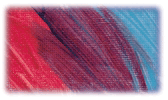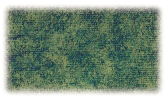Tips & Techniques
Oil Painting Rules
Oil painting with Griffin Alkyd Fast Drying Oil Colour requires attention to three conventional oil painting rules:
Fat over lean (flexible over less flexible). When oil painting in layers, each successive layer must be more flexible than the one underneath. This rule is maintained by adding more medium (e.g. Liquin) to each successive layer.
Thick over thin. Thick layers of oil colour are best applied over thin underlayers.
Due to differences in flexibility, never use Griffin Alkyd Colour on top of conventional oil colours unless the oil colour is completely dry (6-12 months). Conventional oils may, however, be used over Griffin Alkyd Colour.
Colour Mixing
Pigment purity in the Griffin Alkyd Fast Drying Oil Colour Range ensures the brightest colour mixtures. Artists are however, often interested in the colour theory of painting. The three primary colours in the Griffin Alkyd Fast Drying Oil Colour Range are Winsor Lemon, Phthalo Blue and Permanent Rose. These colours are the best selection when only three colours are used. When using a six colour mixing system, we recommend Winsor Lemon, Winsor Yellow, French Ultramarine, Phthalo Blue, Permanent Rose and Cadmium Red Medium.
Whites in the Range
White is the most popular colour in the spectrum and is most useful for producing ‘tints’ when mixed with other colours. The two whites which are available in the Griffin Alkyd Colour range offer the artist different working characteristics. Titanium White is the most popular modern white. It is the whitest, most opaque white and gives excellent covering power in a painting. Mixing White is the most transparent white available which makes it ideal for tints and glazing.
Techniques
Glazing |
|
Blending |
|
Scumbling |
|
Stipple Effect |
|
Scraping Back |
|
Impasto |
|
Underpainting |
|

















